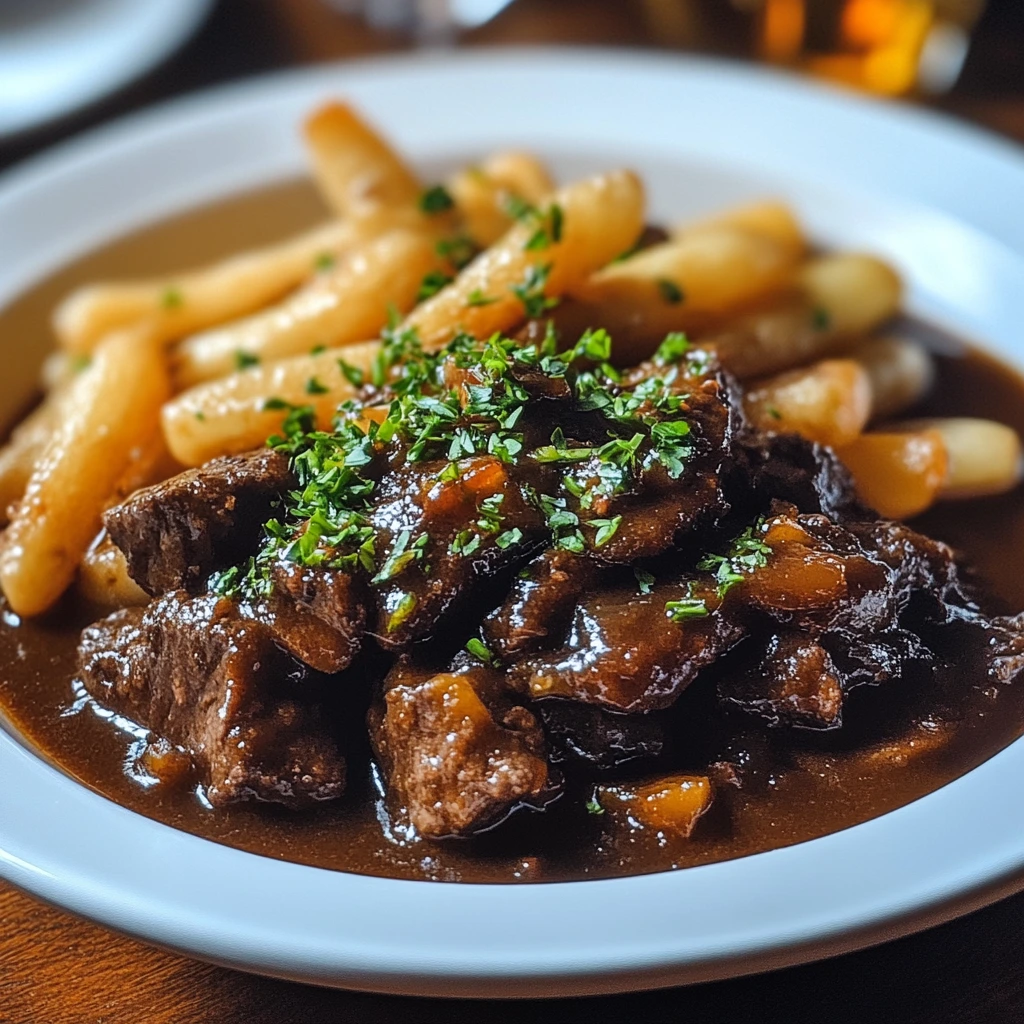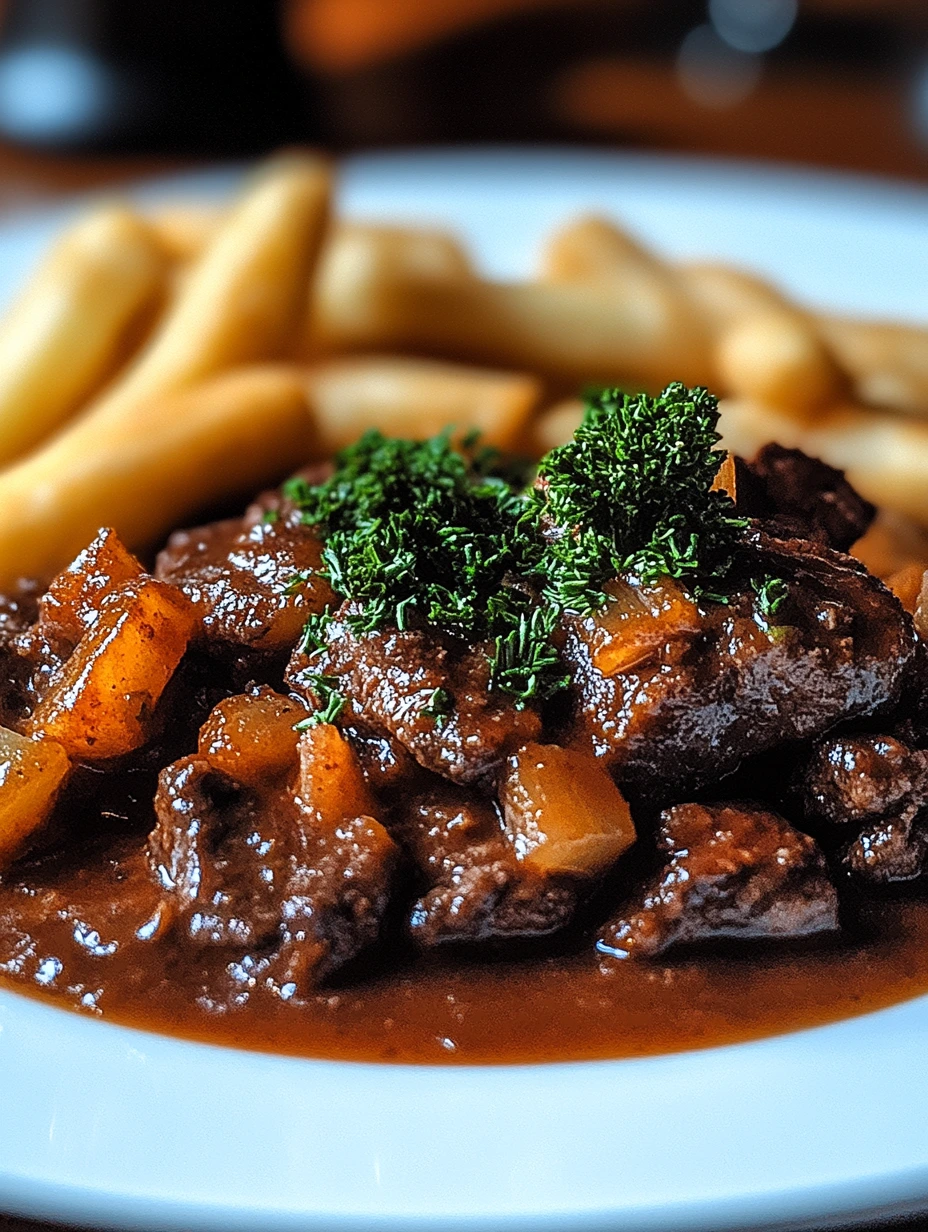 Pin it
Pin it
This classic Belgian beer beef stew delivers a comforting, rich meal that's perfect for chilly evenings. The meat gets incredibly soft after simmering in a flavorful broth enhanced with dark beer.
I first tried Flemish Carbonnade during a trip to Belgium and couldn't wait to make it at home. After playing around with the recipe a few times, this version has become a winter Sunday favorite in my house.
Ingredients
- 900g beef shoulder cut into chunks: this cut turns melt-in-your-mouth tender during slow cooking
- 2 tablespoons vegetable oil: for getting a nice sear on the meat
- 2 large sliced onions: they add sweetness and depth to the dish
- 2 minced garlic cloves: they bring necessary aromatic flavor
- 375 ml dark beer: the key ingredient that gives this dish its unique character
- 240 ml beef broth: boosts the meaty flavor
- 2 tablespoons brown sugar: balances out the beer's bitterness
- 1 tablespoon apple cider vinegar: adds a touch of acidity that lifts all other flavors
- 1 tablespoon Dijon mustard: thickens the sauce and adds a bit of kick
- 2 bay leaves: they infuse a subtle aroma during cooking
- 1 teaspoon dried thyme: pairs wonderfully with the other winter flavors
- Salt and pepper: add to your taste
Step-by-Step Instructions
- Brown the meat:
- Heat the oil in a large pot over medium-high heat. Work with small batches so each piece of beef gets nicely browned on all sides. Getting that perfect color takes about 3 minutes per batch. Set aside the meat on a plate.
- Soften the onions:
- In the same pot, add the sliced onions. Cook them for about 5 minutes while stirring often until they turn clear and start to brown slightly. Then add the garlic and cook for another minute until it smells good.
- Pour in the beer:
- Add the dark beer to the pot. Use a wooden spoon to scrape the bottom carefully and loosen all the stuck-on bits. These little pieces are packed with flavor and will make your sauce taste amazing.
- Mix everything together:
- Put the browned meat back in the pot. Add the broth, brown sugar, vinegar, mustard, bay leaves, thyme, a good pinch of salt, and fresh ground pepper. Gently stir all ingredients.
- Simmer slowly:
- First bring to a boil, then turn the heat down very low right away. Cover and let it cook for 2 to 2.5 hours. Check and stir every 30 minutes. The meat is done when it breaks apart easily with a fork and the sauce has naturally thickened.
Dark beer really turns this simple stew into something special. The first time I made this, I used Leffe Brune, but any Belgian brown beer works great. If you don't want to use alcohol, a strong beef broth with a teaspoon of molasses will do the trick.
 Pin it
Pin it
Storage and Reheating
This Flemish Carbonnade keeps well in the fridge for 3-4 days in an airtight container. To warm it up, use a pot on low heat and add a splash of broth if the sauce looks too thick. Stir gently until everything's hot.
Serving Suggestions
In Belgium, they usually serve Flemish Carbonnade with crispy fries or creamy mashed potatoes. I really like to add some green veggies like green beans or peas to balance out how rich it is. Don't forget some crusty bread for soaking up all that yummy sauce!
History and Tradition
Flemish Carbonnade comes from northern France and Belgian Flanders. It goes back hundreds of years to when beer was often safer to drink than water. Families would use local beer as a base for cooking meats for many hours. Every area and family has their own way of making it, with some adding gingerbread or mustard-spread bread to thicken the sauce.
Frequently Asked Questions
- → What's the best cut of beef for this dish?
Choose beef shoulder or any cut that works well for slow cooking to ensure tender results.
- → Can this dish be made with alcohol-free beer?
It sure can! You'll still get a depth of flavor even with a nonalcoholic beer.
- → How long should it cook?
Let it simmer for about 2 to 2 ½ hours over low heat until the beef reaches a tender texture.
- → What sides go well with it?
This dish pairs wonderfully with mashed potatoes, fries, or crusty bread to soak up the sauce.
- → Can I make it ahead of time?
Absolutely! This stew is great to prepare in advance, as the flavors deepen the longer it rests.
